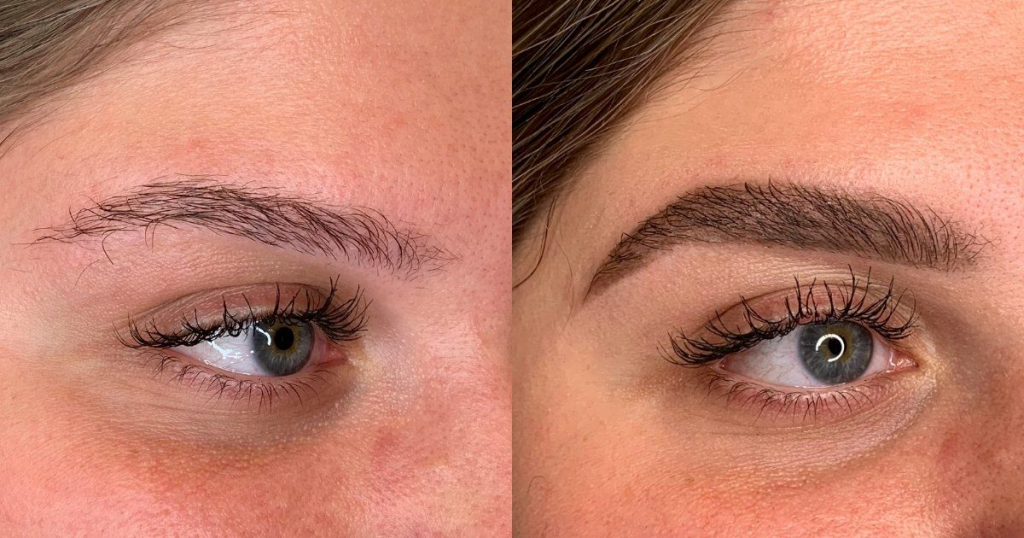
How fast do eyebrows grow back
When it comes to enhancing our facial features, eyebrows play a pivotal role. But what happens when they’re over-plucked, or if hair loss occurs? One question often arises: how fast do eyebrows grow back? Generally, eyebrow hair growth follows a specific cycle and several factors influence its rate. While individual growth rates vary, eyebrows typically take about four to six months to regrow fully. Understanding the eyebrow regrowth process can help manage expectations and aid in promoting fuller brows.
The Basics of Eyebrow Growth
The structure of eyebrow hairs is quite similar to that of other body hair, comprising the shaft, root, and follicle. The lifespan of eyebrow hairs is usually shorter than that of the scalp, but each hair follicle goes through the same growth cycle. This cycle includes the active growing phase (anagen), the transitional phase (catagen), and the resting phase (telogen), after which the hair falls out and a new one begins to grow.
The Eyebrow Growth Cycle
Eyebrow hairs, like other body hairs, have a growth cycle that includes three phases. In the anagen phase, hair is actively growing. This phase lasts about four to six weeks for eyebrows, much shorter than scalp hair. During the catagen phase, growth stops and the hair follicle shrinks, taking about two to three weeks. Lastly, the telogen phase is a resting stage, after which the hair will fall out and a new cycle starts.

Factors Affecting Eyebrow Regrowth
Your genetic makeup plays a significant role in determining hair growth rates. Some people might experience faster regrowth, whereas for others, it might take a longer time. This genetic predetermination also affects the thickness and density of the eyebrows.
Age and Hormonal Influence
As we age, hair growth rates generally slow down, affecting eyebrows as well. Alongside natural aging, hormonal changes, such as those experienced during pregnancy or menopause, could also affect eyebrow growth. Conditions like hypothyroidism might slow down the regrowth process as well.
Health and Nutritional Aspects
Hair growth can be indicative of overall health. A diet lacking in essential nutrients could cause slower hair growth or thinner brows. In contrast, a balanced diet rich in vitamins and proteins can help support the health of your hair follicles and can promote better regrowth.
Average Timelines for Eyebrow Regrowth
During the first few weeks after hair loss or plucking, you might see new hairs beginning to emerge. These newer hairs can appear finer and lighter in color than the fully grown, older hairs that were lost.
When Full Regrowth is Achievable
Patience is key when it comes to eyebrow regrowth. Full regrowth to achieve the natural shape and thickness generally takes about four to six months, depending on individual growth rates and other factors such as how the hair was removed. Threading and waxing, for example, removes hair from the root and might affect regrowth cycles.

Tips to Promote Eyebrow Growth
Incorporating foods that are rich in biotin, omega-3 fatty acids, vitamins A, C, and E, and proteins into your diet can help promote healthy hair growth. These nutrients play a foundational role in stimulating new hair development from the follicles.
- Salmon and other fatty fish
- Eggs, particularly the yolks
- Nuts and seeds
- Spinach and other dark leafy greens
- Sweet potatoes and carrots
- Avocados
Eyebrow Care Routines
A gentle eyebrow care routine, avoiding over-plucking or waxing, can also help the hairs grow back faster and fuller. Regularly brushing your brows can stimulate circulation, which in turn promotes hair growth.
Eyebrow Serums and Growth Enhancers
There are various eyebrow serums and other growth products on the market that claim to improve the speed and fullness of eyebrow regrowth. While results can vary and some might not see dramatic changes, certain serums contain peptides or vitamins that could indeed help promote healthier hair follicles.
When to See a Professional
If, despite giving it all the necessary time and care, your eyebrows seem to be thinning or not growing back, it could be a sign of an underlying issue. In such instances, it is essential to consult a professional for an evaluation.
Conditions Affecting Eyebrow Hair
Conditions that can lead to eyebrow hair loss include alopecia, dermatitis, or hormonal imbalances. Only a healthcare professional can diagnose these conditions and suggest appropriate treatments.

Conclusion
In summary, eyebrow regrowth is a process that will depend heavily on individual factors, including genetics, age, hormonal balance, and overall health. While they often take about four to six months to grow back to their full length and thickness, there are ways to potentially enhance this process. Providing the necessary nutrients to your body, maintaining a healthy skin care routine, and using appropriate grooming methods can all contribute to a better and quicker regrowth cycle. Most importantly, remember that patience and consistency are key in seeing results.
FAQs
Q1: Can over-plucked eyebrows grow back to their original thickness?
A1: It’s possible for over-plucked eyebrows to grow back, but they might not return to their original thickness if the hair follicles have been damaged from repetitive plucking. Consistency in not tweezing and providing good care can help increase the chances of fuller regrowth.
Q2: How can I speed up my eyebrow growth?
A2: While there is no surefire way to speed up eyebrow growth, maintaining a healthy diet, avoiding plucking, using growth serums, and applying oils such as castor oil might help nourish the hair follicles and promote growth. Some people also find that massaging the area gently can stimulate blood flow and hair growth.
Q3: Is it possible for eyebrows not to grow back at all?
A3: It is rare, but possible for eyebrows not to grow back if the follicles are severely damaged or if there are underlying health conditions. If you experience this, it is important to consult with a healthcare professional to explore potential treatments or cosmetic options.
Q4: How frequently should one trim or pluck eyebrows to maintain shape without hindering growth?
A4: It’s generally recommended to pluck minimally and only when necessary to maintain shape—typically every three to four weeks. It’s also advised to seek professional help for shaping to avoid causing damage that could affect the growth cycles.
Q5: Are there any medical treatments available for those who struggle with eyebrow regrowth?
A5: Yes, treatments such as minoxidil, microblading, and eyebrow transplant surgery are available options for those struggling with regrowth. However, these should only be considered after consulting with a healthcare professional and determining the underlying cause of the regrowth problem.
Reading time 8 minutes When it comes to enhancing our facial features, eyebrows play a pivotal role. But what happens when they’re over-plucked, or if hair loss occurs? One question often arises: how fast do eyebrows grow back? Generally, eyebrow hair growth follows a specific cycle and several factors influence its rate. While individual growth rates…